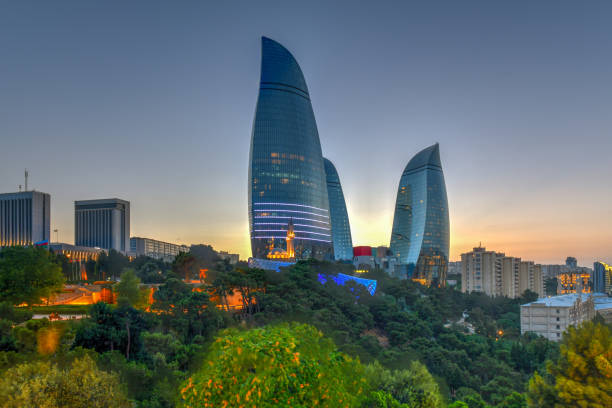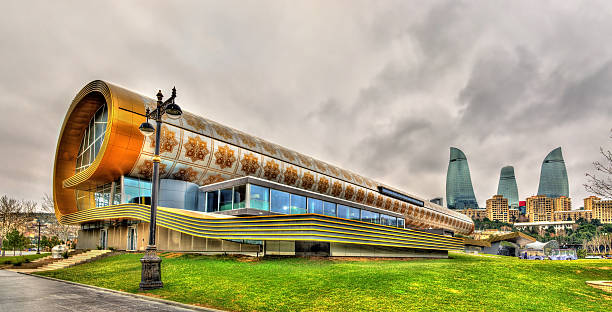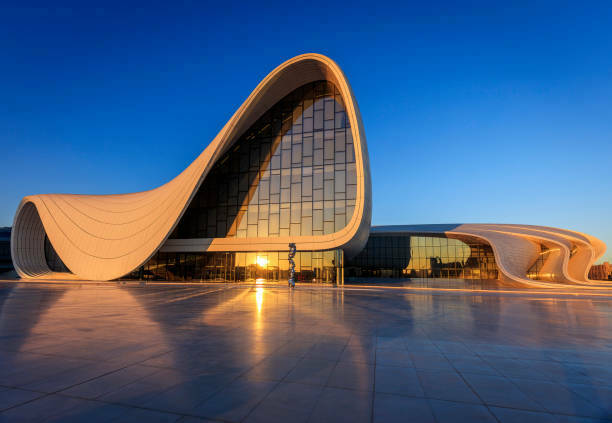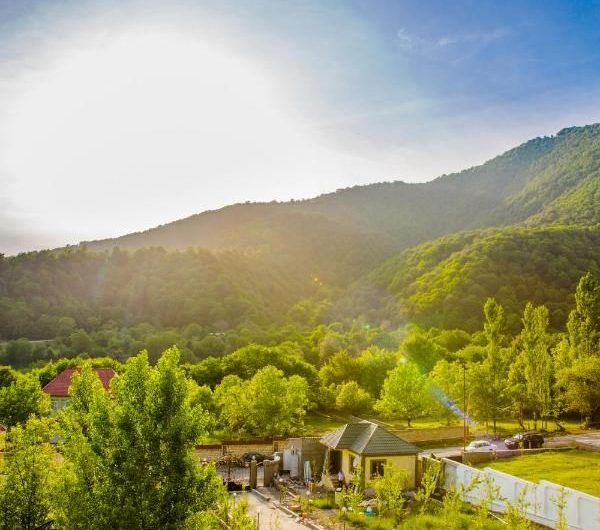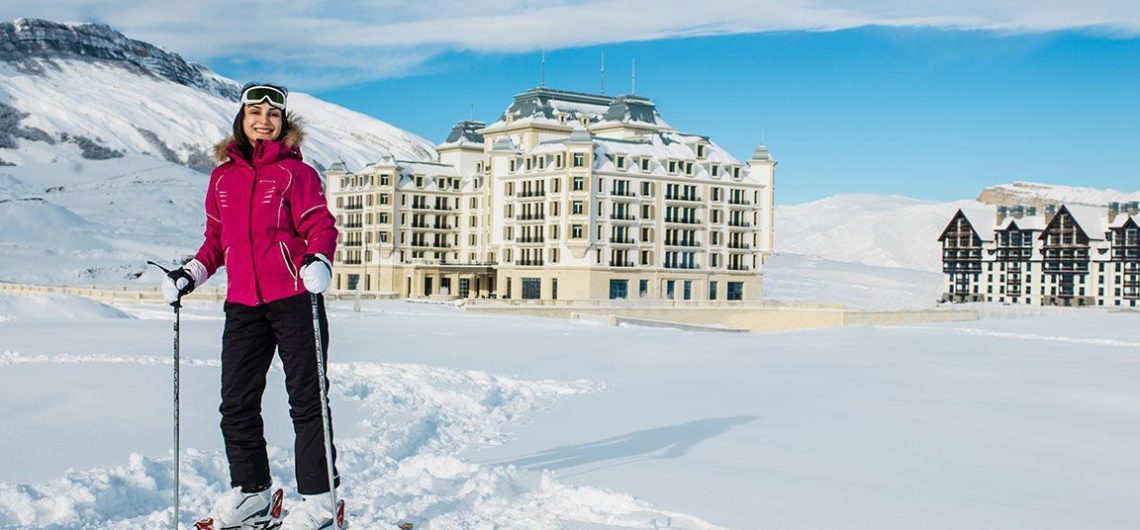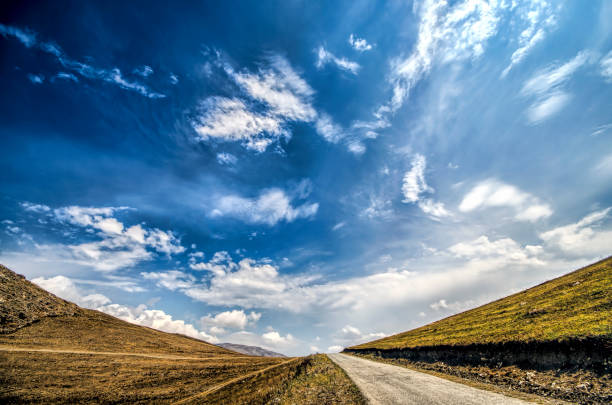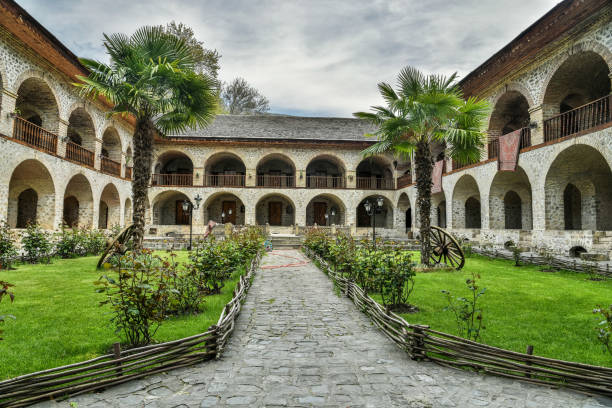Gabala is a unique town on the slopes of the Greater Caucasus Range, is famous for its rare combination of beautiful mountain landscapes, historical monuments, and a lot of tourist attractions. Gabala is a small city located 220 km away from Baku on the territory of Shaki-Zagatala administrative district zone, in the northwest part of Azerbaijan on the border of Dagestan and Georgia. Gabala town is the administrative center of the district. The population is less than 13 thousand people. The ethnic composition of the city is very diverse and international and consists of Azerbaijanis, Lezgins, Udi, and representatives of other nationalities. The main religions here are Islam and Christianity. Climate On the weather conditions of the region, surrounding mountains have a great extent influence. Climate toward the south is dry and warm in the winter, and in the mountains cold and damp. In the summer there is no sweltering heat and severe frosts in winter. The average temperature in January is -14 ° C, in July + 27-30 ° C. The largest share of precipitation is from April to September, but in general, they are not so significant, but in the highlands, winter, more snow, and rain in the summer. The most optimal period for a trip here is the period from May to October. History Qabala is one of the most ancient cities of Azerbaijan. One of the first-mentioned written sources about Kabala dated to the 1 century of the 1st century Greek and Roman (Pliny). Archaeological findings suggest that the city has an ancient history and was inhabited already in times the Late Stone Age. However, the information in ancient sources and archaeology found around the city allow scientists to roughly determine the date of foundation of Kabala around 2000 years old. Throughout its history, Kabala sways
Gabala
is a unique town on the slopes of the Greater Caucasus Range, is famous for its rare combination of beautiful mountain landscapes, historical monuments, and a lot of tourist attractions.
Gabala is a small city located 220 km away from Baku on the territory of Shaki-Zagatala administrative district zone, in the northwest part of Azerbaijan on the border of Dagestan and Georgia. Gabala town is the administrative center of the district. The population is less than 13 thousand people. The ethnic composition of the city is very diverse and international and consists of Azerbaijanis, Lezgins, Udi, and representatives of other nationalities. The main religions here are Islam and Christianity.
Climate
On the weather conditions of the region, surrounding mountains have a great extent influence. Climate toward the south is dry and warm in the winter, and in the mountains cold and damp. In the summer there is no sweltering heat and severe frosts in winter. The average temperature in January is -14 ° C, in July + 27-30 ° C. The largest share of precipitation is from April to September, but in general, they are not so significant, but in the highlands, winter, more snow, and rain in the summer. The most optimal period for a trip here is the period from May to October.
History
Qabala is one of the most ancient cities of Azerbaijan. One of the first-mentioned written sources about Kabala dated to the 1 century of the 1st century Greek and Roman (Pliny). Archaeological findings suggest that the city has an ancient history and was inhabited already in times the Late Stone Age. However, the information in ancient sources and archaeology found around the city allow scientists to roughly determine the date of foundation of Kabala around 2000 years old. Throughout its history, Kabala sways between foreign domination and independence. The city was repeatedly attacked, destroyed to the ground, and robbed. In this regard, most of the surviving monuments of the architecture date back to the XVI-XIX BB. From the IV century BC, The V century BC Cabal was a relatively important political, economic, and commercial center. In the 60s BC Roman legion attacked the city, but could not capture it. Azerbaijani city of Gabala, over 600 years was the center of Caucasian Albania, and then it became part of the state of Shirvanshahs and Sheki khanate, in successive order. In the XVIII century on the territory of Gabala, there was little feudal education – Qutqashen Sultanate, which soon became a member of Sheki khanate and managed Naib appointed Sheki Khans.
In the middle of the XIII century as a result of continuous Mongolian invasions, the city lost its former importance and the inhabitants gradually abandoned him. The district has a lot of monuments that have survived from ancient times. Mound Kabalaka, capital of the state of Caucasian Albania, is 20 km to the northeast of the city of Gabala. There are only fragments of the majestic fortifications of the ancient city, which is mentioned by Strabo, Pliny, and Ptolemy, one of the oldest cities in the country, it is already mentioned in the context at the end of V century B.C T (that is almost 900 years old) was the capital of Azerbaijan – Caucasian Albania.
Geography
Kabala is located on the foothills of the Greater Caucasus, on the right bank of the river Damiraparanchaj. It is surrounded by some of the highest peaks of the Caucasus – Bazarduzu, Bazaryurd, Tufanly, rising to a height of almost 4000 meters above sea level. The administrative center of the district is 900 meters above sea level. The northern part of the territory belongs to the southern slopes of the Caucasus Mountains, the central part refers to Alazan-Hafteranskoy Valley, the southern part belongs to Adzhynohurskim mountains. Gabala is totally unique corner of Azerbaijan with extraordinary rich flora and fauna. in the woods and on the mountain pastures can be found noble deer and mountain tours, gazelles, wild boar, gray rabbit, bears, wolves, foxes, and numerous birds – pheasants, partridge, francolin, etc. Forest cover most of the territory of the region, where the majority of growing hornbeams, oaks, beeches, junipers, birches, poplars, walnuts, chestnuts, and other trees with an average age of over 500 years. Some of them are included in the list of natural monuments protected by the state.
General info
Now Gabala is the center of the north-western region, characterized by a high rate of development and a rapidly changing shape. The economy of the region is mostly agricultural, partially tourist-based, with some manufacturing industries, mainly for food preserves, tobacco, and silkworm cocoon drying. This area is known for its waterfalls and mountain streams, which are sent to the tourists, indifferent to the beautiful natural scenery, hunting, and fishing. An important cultural event in the city became acquired high popularity in recent years, the Gabala International Music Festival, which takes place every summer and is going to a lot of fans. The pride of the local people is the local football club, which plays in the highest national league.
Tourism and culture
Gabala is considered a popular tourist destination due to the combination of a very good spring climate, woods along the mountains, and beautiful nature was exploited by the construction of large numbers of hotels and apartments in the city. The city contains “Gabaland” amusement park, There are all conditions for recreation and entertainment for children an ice skating rink Gabala has several shopping malls; the most famous city center mall is Gabala Mall. Tufan Dag Ski Complex, one of the biggest mountain resorts in the Caucasus located in Gabala Since 2009, the city has been home to Gabala International Music Festival, which included performances from classical and jazz performers Here tourists are available for restaurants and hotel services at a high level. Around the mountains covered with forests, it is Funfair, which is unparalleled in the South Caucasus, and other tourist facilities in a beautiful corner of nature. The area is also a project for the development of winter tourism. Construct installation for skiing in the mountains and other winter sports. The Gabala are also organized international events. Traditional Gabala International Music Festival was known all over the world. The festival involves prominent musicians, composers, and performers.
Airport
Qabala Airport is the only airport in the city, that serves a number of domestic and international destinations.
Architecture
The architectural appearance of the city is formed from the mosques, mausoleums, temples, and historical monuments, which blend harmoniously with the majestic mountain landscapes and dense green area surrounding modern Gabala. The long history and beautiful landscapes of this region give the regional capital a special charm
Natural sights
Many monuments of history and culture have remained on the territory of the district.
Nohur lake
Some of the local beauty: the so-called Russian forest, river valleys, the famous chestnut forest, numerous picturesque villages Vyandam, Gyamarvan, Engidzha, mountainous village of Laza where since not long time ago tourists can get even riding a quad bike provided by hotel Gafgaz.
Nidj is a small village located 20 km away from Gabala has also gained fame. There live Udins – the direct descendants of ancient Caucasian Albanians. To get a lot of impressions from the edge of the beautiful natural landscape and unique routes along wild mountain rivers. is located on the bank of Nohur Lake, 5 km of Gabala-Baku highway. Tours to waterfalls, across the forests, and to the historical monuments are available.
7 beauty
In Mirror lakes, fast rivers, and waterfalls, ice fountains, emerald forests, mountains, whose peaks are covered with eternal snow. The famous Seven beauties waterfall consists of seven stages. The people believe that if you make a wish and be able to go up to the last – the seventh stage of the waterfall, it is necessarily true.
Gyabyalinsky area with its stunning lake Nohur, with its beautiful high waterfalls, feature fast mountain rivers, cold as ice springs, it has become one of the most important tourist areas of Azerbaijan To get a lot of impressions from the edge of the beautiful natural landscape and unique routes of along wild mountain rivers.
Tours
Caspi Tours offers day trips to different cities of Azerbaijan. One-day tour from Baku to Gabala in our list too
 , the ISO code – 994
, the ISO code – 994
